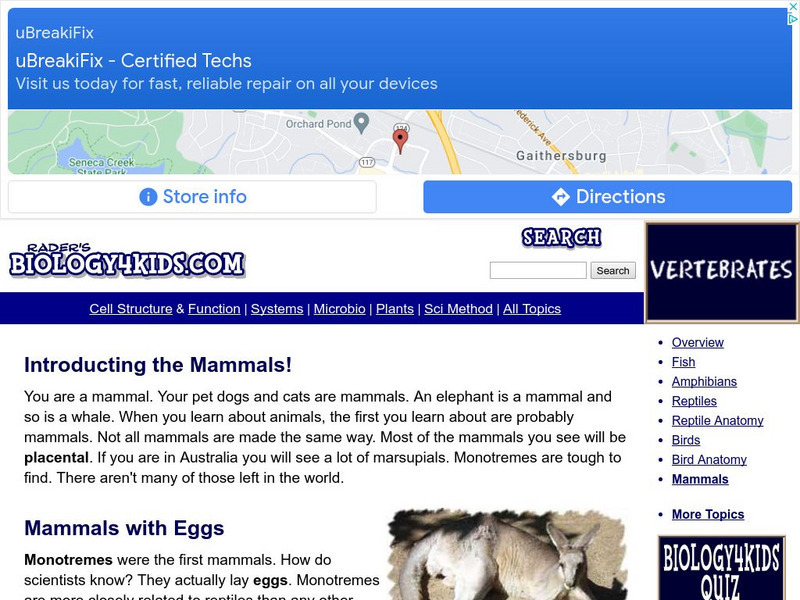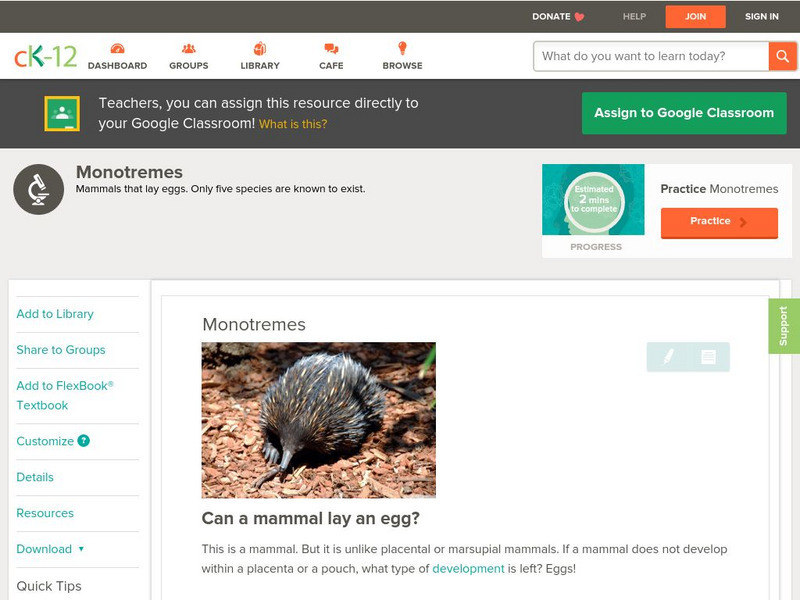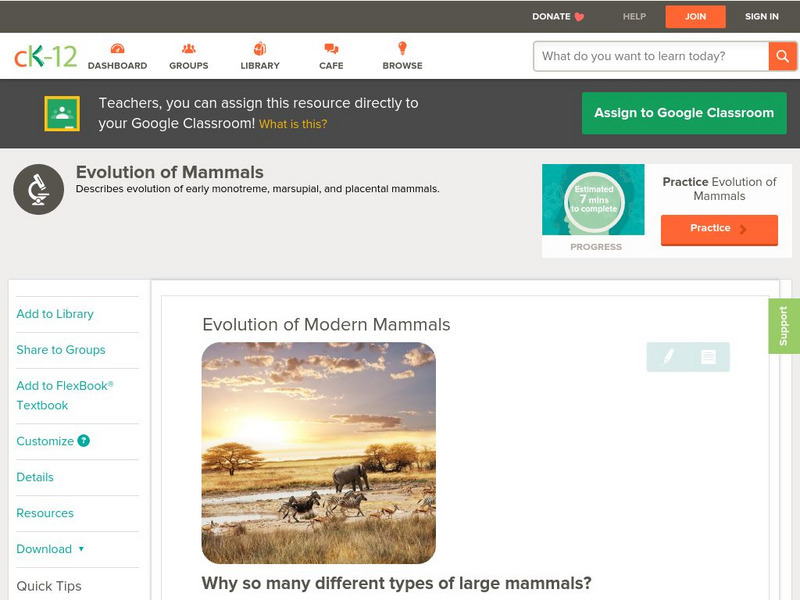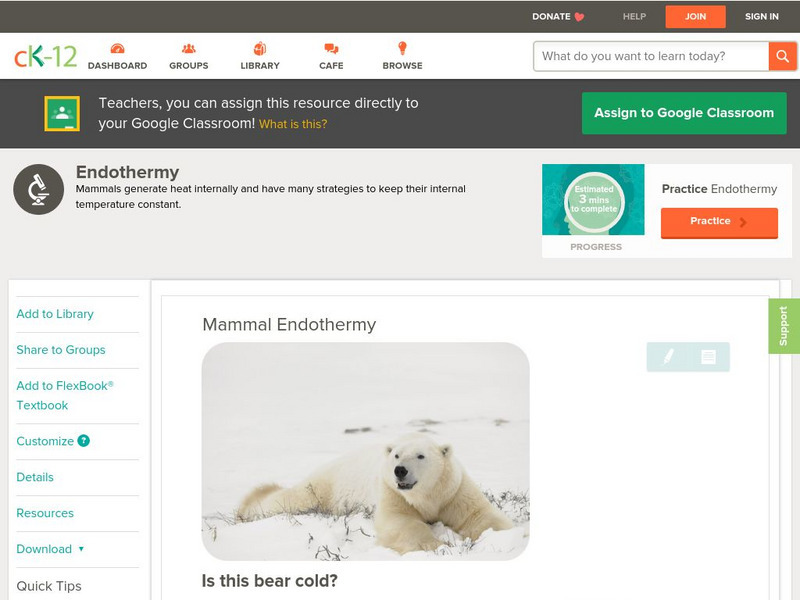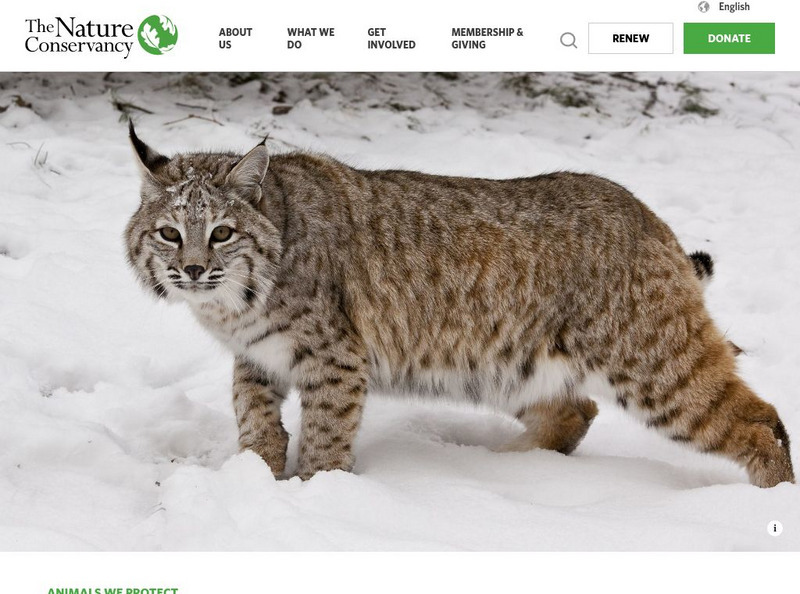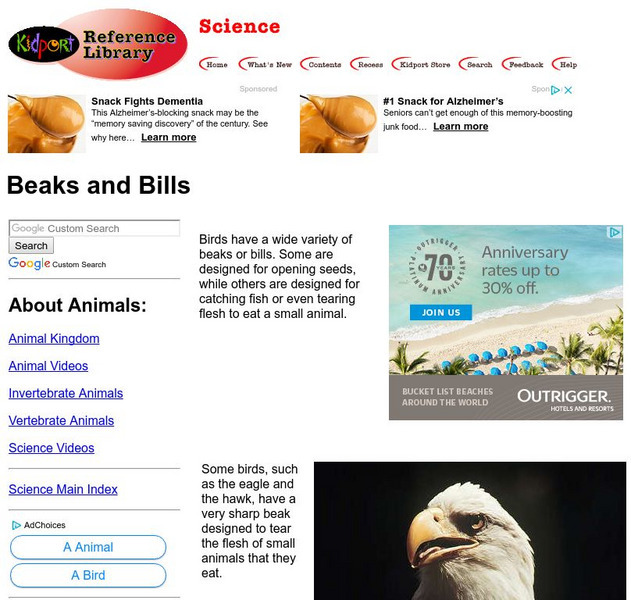Smithsonian Institution
National Museum of Natural History: Hall of Mammals: Bison
Brief overview of the bison and accompanying photos demonstrate the physical adaptations that allow this animal to survive in its habitat.
Smithsonian Institution
National Museum of Natural History: Hall of Mammals: White Tailed Deer
Brief overview of the white-tailed deer and accompanying photos demonstrate the physical adaptations that allow this animal to mate and feed their babies.
Smithsonian Institution
National Museum of Natural History: Hall of Mammals: Pronghorn
Brief overview of the pronghorn and accompanying photos demonstrate the physical adaptations that allow this animal to be one of the fastest mammals.
Smithsonian Institution
National Museum of Natural History: Hall of Mammals: Vampire Bat
Brief overview of the vampire bat and an accompanying photo demonstrate the physical adaptations that allow this animal to eat to survive.
Smithsonian Institution
National Museum of Natural History: North American Mammals
This concise site contains photos of North American mammals along with a map showing where they currently can be found. Includes links to other mammal sites.
Discovery Education
Discovery Education: What's a Mammal?
A comprehensive lesson plan that reviews the characteristics of mammals. Contains a number of interesting links, suggested readings, and a three-point evaluation rubric.
Biology 4 kids
Biology4 Kids: Introducing the Mammals
What different types of mammals exist in the world? Peruse this information about mammals that lay eggs, mammals with pouches, and those that give birth to live animals.
Ducksters
Ducksters: Mammals for Kids: Learn About Animals and What Is a Mammal
Kids learn what is a mammal and what makes it different from other animals on this site.
Exploring Nature
Exploring Nature Educational Resource: All About Mammals: Lecture
Learn about the similar characterics shared by all mammals. Includes a list of the orders of mammals as well as an example of a mammal classification.
CK-12 Foundation
Ck 12: Biology: Monotremes
[Free Registration/Login may be required to access all resource tools.] Describes how monotremes reproduce.
CK-12 Foundation
Ck 12: Biology: Evolution of Early Mammals
[Free Registration/Login may be required to access all resource tools.] Overview of the evolution of monotreme, marsupial, and placental mammals.
CK-12 Foundation
Ck 12: Biology: Evolution of Modern Mammals
[Free Registration/Login may be required to access all resource tools.] Covers the evolution of modern mammals.
ClassFlow
Class Flow: Vertebrate Flipchart
[Free Registration/Login Required] This flipchart introduces students to vertebrates and provides pictures and information on the different types of vertebrates including their characteristics, their physical and environmental needs, and...
ClassFlow
Class Flow: Vertebrates and Invertebrates
[Free Registration/Login Required] Using this lesson the students will review the 2 groups of animals - vertebrates and invertebrates. They will be actively involved in classifying animals. An Activote assessment is also included.
CK-12 Foundation
Ck 12: Biology: Mammal Endothermy
[Free Registration/Login may be required to access all resource tools.] Describes how mammals maintain their body temperature.
CK-12 Foundation
Ck 12: Biology: Mammal Characteristics
[Free Registration/Login may be required to access all resource tools.] Covers the characteristics and traits of mammals.
ClassFlow
Class Flow: Mammals, What Are We?
[Free Registration/Login Required] In this flipchart students learn the characteristics of mammals and practice identifying mammals and non-mammals.
ClassFlow
Class Flow: Marine Mammals
[Free Registration/Login Required] This flipchart discusses the characteristics and classifications of marine mammals. It focuses specifically on whales. Assessment questions using Activotes are included.
Nature Conservancy
Nature Conservancy: Animal Profiles: Bobcat
Short profile of the bobcat, a North American wildcat.
Kidport
Kidport: Beaks and Bills
Birds have a wide variety of beaks or bills. Some are designed for opening seeds, while others are designed for catching fish or even tearing flesh to eat a small animal. Discover the dynamic uses of beaks and bills.
Ducksters
Ducksters: Dolphins
Kids learn how dolphins eat, sleep, and live together. Bottlenose dolphins and orcas travel the ocean in pods.
Science4Fun
Science4 Fun: Dog
Learn about the appearance, diet, habitat, and other fun facts about this popular pet.
Science4Fun
Science4 Fun: Dolphins
Learn about the appearance, diet, habitat, conservation status, and other fun facts about this playful marine mammal.





